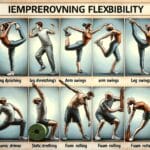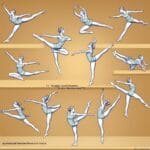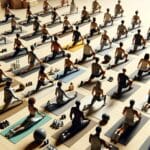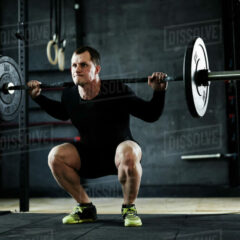https://weightliftingforpower.com/sequential-approach-to-improving-flexibility/
Flexibility is essential for physical fitness. It helps you improve exercises better and perform everyday movements. The capacity of one’s joints and muscles to move without discomfort or pain is what is meant by flexibility. It’s essential for maintaining balance, reducing the risk of injuries, and increasing your level of comfort during physical activities.


Having good flexibility is one of the most effective ways to prevent injuries. By allowing your body to move more freely, you reduce the likelihood of placing undue stress on your muscles and joints. It becomes increasingly essential as you age or engage in repetitive motion sports or occupations. Improved flexibility contributes to better performance, whether you’re a casual jogger or a competitive athlete. It can lead to more fluid movements, better posture, and, in some cases, increased power and endurance.
While many people know that flexibility is essential, there’s a wealth of myths that surround its practice. Some believe that only certain activities like yoga or ballet require flexibility or that they naturally deteriorate with age beyond reversal. Others may think they’re just not ‘flexible people,’ resigned to the limited range of movement indefinitely. However, flexibility can be significantly improved with regular training, regardless of your starting point or age.
With these basics in mind, it becomes clear that knowing your flexibility level is a critical first step. You will only know how much you can improve if you know where you’re starting from. That’s why the next natural step involves evaluating your current flexibility and establishing goals. It lays the foundation for a sequential approach to increasing your range of motion.
Assessing Your Current Flexibility Level

Before jumping into a new flexibility program, it’s essential to know where you stand. It’s like mapping out a route before a trip; you need a starting point. An effective way to set and track progress towards meaningful goals is by first conducting an honest and thorough assessment of your flexibility. You don’t need fancy equipment for this; a clear space, measuring tape, or chalk might do the trick.
A straightforward approach is the ‘sit and reach’ test. Sit on the floor, legs straight, and reach forward towards your toes. How far can you come? Mark the spot. And Measures the flexibility of your hamstrings and lower back. It’s crude but effective. Don’t worry if you’re far from touching your toes – everyone starts somewhere. Or perhaps you could try the shoulder flexibility test. Can you bring both hands together behind your back, one reaching from above, the other up from the waist? Measures shoulder mobility.
Now that you have some baseline measurements of your flexibility, it’s time to set some goals. Be realistic. If your fingertips are 6 inches from your toes today, targeting a 1-inch improvement in the first few weeks is more sensible than expecting to palm the floor immediately. Record your results in a journal or an app – tracking is crucial for seeing progress over time.
With your current flexibility mapped out and goals in place, it’s crucial you develop a routine that acknowledges your body’s needs and respects your limits. You’ll want to focus on exercises and stretches, targeting areas where you’re less flexible, always prioritizing safety to avoid any injuries. Remember, the aim is to improve over time, not to force your body into poses it’s not ready for. Patience and consistency are your best assets in this endeavor.
Developing a Personalized Flexibility Routine


Your flexibility journey is uniquely yours. What works for one person may not suit another, which is why a tailored approach is essential.
Begin by identifying critical stretches for your specific needs. Are your hamstrings tight? Is your shoulder mobility limited? Target these areas with stretches designed for them.
Dynamic stretching, involving movement and gradual increases in reach and speed, is excellent for warming up. Static stretching, where you hold a pose, is ideal for cooling down.
Incorporate a blend of both dynamic and static stretching into your routines for balanced flexibility training.
Consider different yoga poses, pilates exercises, and other flexibility-focused activities to expand your routine.
Remember to listen to your body. Stretch to the point of tension, not pain, and hold static stretches for 15 to 30 seconds for optimal benefit.
Safety is paramount. Avoid bouncing while stretching, as it can cause muscle strain. Move into stretches slowly and with control.
Pair your stretching routine with strength training exercises. Muscles work in pairs, so it’s essential to strengthen both the muscle you’re stretching and its opposing muscle group.
Finally, stay consistent with your routine. Flexibility is a long-term goal, and regular practice is vital to seeing improvements.
Tracking Progress and Adjusting Your Approach
I understand the enthusiasm with which you commit to a flexible routine, eagerly anticipating the fruits of your consistency. But let’s be clear: actual progress requires both effort and time, and it’s my job to ensure you have the tools to see tangible improvements. Keeping an eye on your development is not just encouraging; it lets you refine your approach, ensuring it remains effective and safe.
You don’t need intricate gadgets or software to chart your progress. Simplicity often prevails. Use a diary to note your stretching frequency, the duration of each session, and how specific stretches feel over time. Comparing initial assessments to current capabilities highlights your advancement and illuminates areas needing extra attention. Celebrate these wins; they fuel your motivation.
Adjustments are not admissions of failure; they’re signs of intelligence at work. If a stretch no longer challenges you, it’s time for an upgrade. Introduce props like straps or foam rollers or explore more profound variations. Conversely, if discomfort creeps in, that’s your cue to scale back or seek guidance. Flexibility training isn’t a race; it’s a commitment to long-term health.
Rest and recovery are as critical as the stretches themselves. Pushing too hard can set you back, so listen to your body. Days off are an essential component of your flexibility journey, allowing muscles to heal and adapt. With patience and persistence, a more limber you await on the horizon. Keep stretching, keep adjusting, and stay committed – your future self will thank you.
